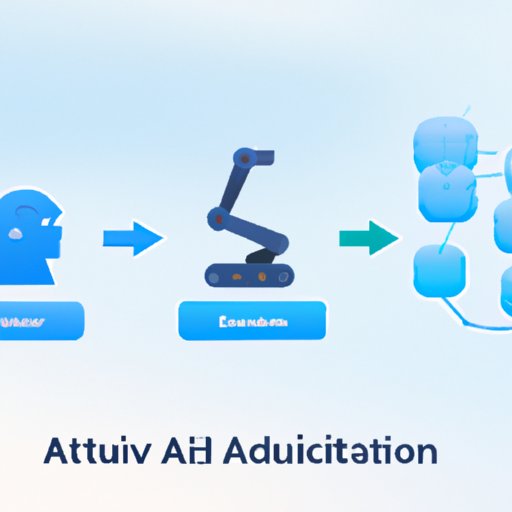Introduction
Adversarial AI attacks are a growing concern in the field of Artificial Intelligence (AI). These attacks involve using malicious inputs to manipulate or disrupt AI systems, potentially leading to serious security and privacy risks. Understanding how to defend against such attacks is essential for organizations, governments, and individuals who rely on AI technology.
In this article, we will explore how adversarial AI attacks can be defended against. We will discuss techniques for developing AI systems that are able to detect and respond to adversarial inputs, as well as defensive techniques such as input transformation, model distillation, and robust optimization. We will also look at security measures such as anomaly detection, behavioral analysis, and access control, and explain how automated data validation processes with strong authentication methods can help protect against such attacks. Finally, we will examine safety mechanisms such as sandboxing, virtualization, and isolation, and their benefits.
Developing AI Systems that are Able to Detect and Respond to Adversarial Inputs
The first step in defending against adversarial AI attacks is to develop AI systems that are able to detect and respond to such inputs. To do this, AI systems must be trained to recognize when an input is malicious and to respond appropriately. There are several techniques that can be used for this purpose, including supervised learning, reinforcement learning, and unsupervised learning.
Supervised learning involves training an AI system to classify input data as either malicious or benign. The AI system is given labeled data, which it uses to learn how to identify malicious inputs. Reinforcement learning is another technique that can be used to train an AI system to detect adversarial inputs. In this approach, the AI system is rewarded for correctly identifying malicious inputs and penalized for incorrectly classifying benign inputs. Unsupervised learning can also be used to train AI systems to detect adversarial inputs. In this approach, the AI system is given unlabeled data and is tasked with discovering patterns that indicate malicious activity.
Using Defensive Techniques such as Input Transformation, Model Distillation and Robust Optimization
Another way to defend against adversarial AI attacks is to use defensive techniques such as input transformation, model distillation, and robust optimization. Input transformation is a technique that involves transforming input data in order to make it more difficult for an adversary to craft malicious inputs. For example, an image may be transformed by adding random noise or blurring the edges. This makes it harder for the adversary to craft an attack that is effective against the AI system.
Model distillation is another defensive technique that can be used to protect against adversarial AI attacks. This technique involves training a smaller, simpler version of the AI model, which is then used to detect and respond to adversarial inputs. This reduces the complexity of the model and makes it less susceptible to attacks. Robust optimization is yet another technique that can be used to defend against adversarial attacks. This involves optimizing the model so that its performance is not affected by small changes in the input data.
These defensive techniques can help protect against adversarial AI attacks by making it difficult for adversaries to craft effective attacks. They can also help reduce the impact of successful attacks, as the AI system will still be able to detect and respond to malicious inputs.
Deploying Security Measures such as Anomaly Detection, Behavioral Analysis and Access Control
In addition to defensive techniques, security measures such as anomaly detection, behavioral analysis, and access control can help protect against adversarial AI attacks. Anomaly detection is a technique that can be used to detect unusual or suspicious activities, such as a user attempting to access a system using a malicious input. Behavioral analysis can also be used to detect suspicious behavior, such as a user trying to access a system without permission. Access control is a security measure that can be used to restrict access to certain areas of a system, ensuring that only authorized users are allowed to enter.
These security measures can help protect against adversarial AI attacks by detecting and responding to suspicious activity. They can also provide additional layers of protection by restricting access to certain areas of a system, making it more difficult for an attacker to gain access.

Incorporating Automated Data Validation Processes That Use Strong Authentication Methods
To further protect against adversarial AI attacks, organizations should also consider incorporating automated data validation processes that use strong authentication methods. Automated data validation processes are designed to ensure that input data is accurate and valid before it is used by an AI system. Strong authentication methods, such as multi-factor authentication, can help verify the identity of users and ensure that only authorized users are able to access a system.
These processes can help protect against adversarial AI attacks by verifying the accuracy and validity of input data and preventing unauthorized access to a system. They can also help ensure that malicious inputs are not used to manipulate or disrupt an AI system.
Introducing Safety Mechanisms Such as Sandboxing, Virtualization and Isolation
Finally, organizations should consider introducing safety mechanisms such as sandboxing, virtualization, and isolation. Sandboxing is a technique that can be used to create a secure environment in which AI systems can be tested and evaluated. Virtualization is another safety mechanism that can be used to create a simulated environment in which AI systems can be tested without affecting the real system. Isolation is a technique that can be used to separate a system from the rest of the network, making it more difficult for an attacker to gain access.
These safety mechanisms can help protect against adversarial AI attacks by providing a secure environment in which AI systems can be tested and evaluated. They can also help to prevent attackers from gaining access to a system, as well as isolating a system from the rest of the network.
Conclusion
Adversarial AI attacks are a growing concern and can have serious consequences. In this article, we discussed techniques and strategies that can be used to defend against such attacks, including developing AI systems that are able to detect and respond to adversarial inputs, using defensive techniques such as input transformation, model distillation, and robust optimization, deploying security measures such as anomaly detection, behavioral analysis, and access control, incorporating automated data validation processes that use strong authentication methods, and introducing safety mechanisms such as sandboxing, virtualization, and isolation. By implementing these strategies, organizations can better protect themselves against adversarial AI attacks.
Further research into the effectiveness of these strategies and the development of new techniques for defending against adversarial AI attacks is needed. As AI technology continues to evolve and become more widely adopted, organizations must remain vigilant and continue to develop strategies to protect against these threats.
(Note: Is this article not meeting your expectations? Do you have knowledge or insights to share? Unlock new opportunities and expand your reach by joining our authors team. Click Registration to join us and share your expertise with our readers.)
